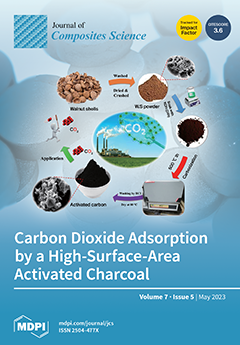In the last few decades, natural composite materials have been considered one of the highly sustainable ecological alternatives for reducing the consumption of synthetic materials. Today, research on natural fiber composites is the main thrust for their use in various industrial applications. Further,
[...] Read more.
In the last few decades, natural composite materials have been considered one of the highly sustainable ecological alternatives for reducing the consumption of synthetic materials. Today, research on natural fiber composites is the main thrust for their use in various industrial applications. Further, continuous research works are being carried out to utilize natural composites as an alternative to synthetic materials. However, the inhomogeneity of composites, delamination, fiber pullout, higher surface roughness (SR) and dimensional inaccuracy under traditional machining have led the attention towards non-traditional machining, such as abrasive water jet machining, to achieve high-quality components. Hence, in this study, an experimental analysis based on the design of experiments is conducted on the machinability of a hybrid rice straw/
Furcraea foetida composite under abrasive water jet machining (AWJM). Further, the concentration of the rice straw and the AWJ process parameters are varied, and their effects on the quality of machining is evaluated. The experimental trials are designed based on the Taguchi L
27 orthogonal array, followed by an analysis of variance (ANOVA). From extensive experimentations, the concentration of rice straw is observed to be the most contributing (93.5%) factor to the SR. The traverse speed (TS) shows the highest percentage contributions of 93.13%, 55.50 and 55.70% to the material removal rate (MRR) and the top (T
KW) and bottom kerf widths (B
KW), respectively. However, the interaction between the fiber concentration and traverse speed gives the maximum contribution (35.04%) to the kerf taper (K
T). A second-order response surface model is generated to study the effects of the process parameters on the SR, MRR, T
KW, B
KW and K
T in any experimental domain. Finally, the microstructural characteristics of the machined surfaces, such as micro-cracks, debonding, and fiber pullout, are discussed.
Full article





